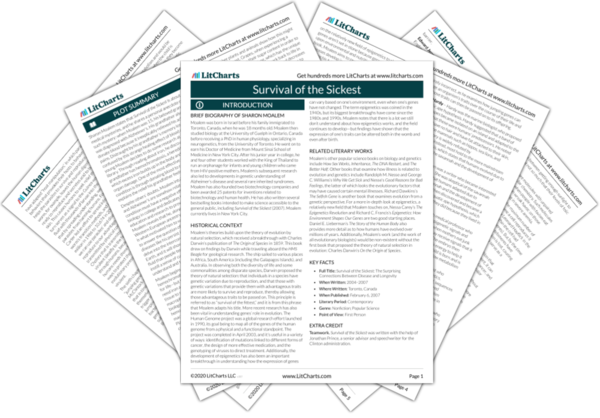Transposons (“jumping genes”) Quotes in Survival of the Sickest
By introducing the harmless virus to our bodies, we stimulate our immune systems to produce antibodies specifically tailored to defend against that virus. Then, if we are exposed to the harmful version, our bodies are prepared to defend themselves immediately.
McClintock believed that the jumps are a genomic response to internal or environmental stress that cells can't handle under their existing setup. Essentially, a challenge to survival triggers the organism to throw the mutation dice, hoping it will land on a change that will help. That’s what she thought was going on with the corn plants she was studying—too much heat or too little water triggered the corn to gamble its survival on finding a mutation that could help it survive.
According to Villarreal, this capacity of African primates to support the persistent infection of other viruses may have put our evolution on “fast forward” by allowing more rapid mutation through exposure to other retroviruses. It’s possible that this capacity helped spur our evolution into humans.
Essentially, one or more of the compounds in the vitamin supplements fed to the expectant mothers reached down into the mouse embryos and flicked the agouti gene into the “off” position. When the baby mice were born, their DNA still contained the agouti gene, but it wasn’t expressed—chemicals had attached to the gene and suppressed its instructions.
I hope that you’ll come away from this book with an appreciation of three things. First, that life is in a constant state of creation. Evolution isn’t over—it’s all around you, changing as we go. Second, that nothing in our world exists in isolation. We—meaning humans and animals and plants and microbes and everything else—are all evolving together. And third, that our relationship with disease is often much more complex than we may have previously realized.












